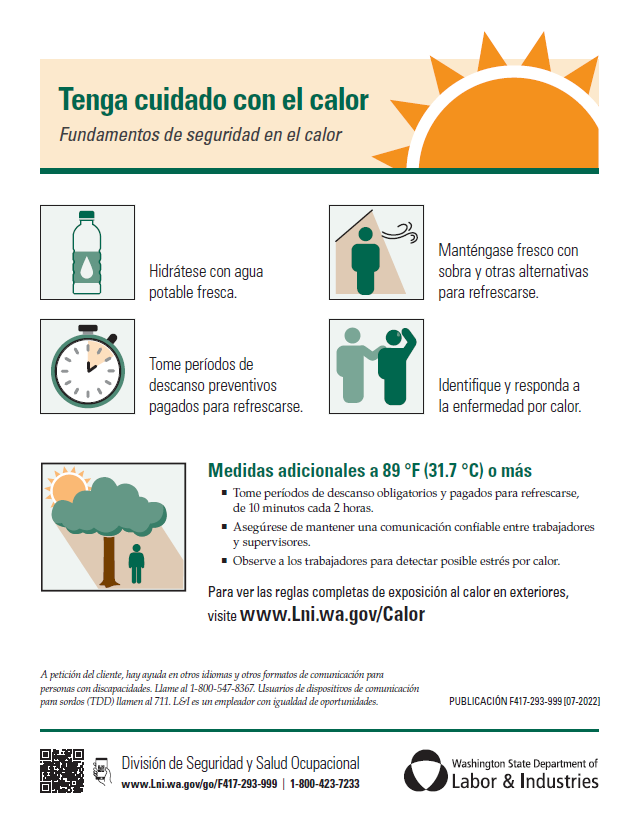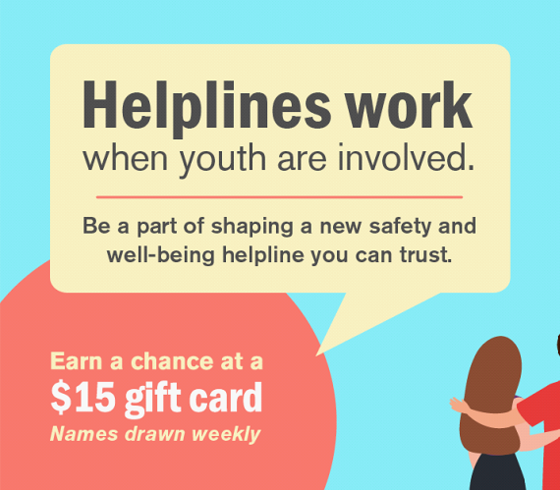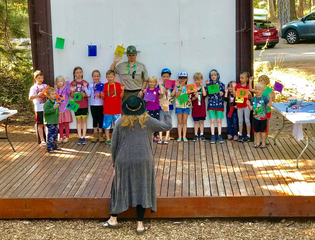|
 Free meals for kids and teens are available in your neighborhood this summer. Free Summer Meals programs are offered at the places where your family lives, learns and plays—including schools, parks, community centers and faith-based organizations.
Free Summer Meals programs are open to all families and don’t ask for any paperwork—kids can just drop in and grab a meal. Many sites also offer fun activities that help kids stay active and engaged when school is out.
Find your nearest Free Summer Meals click here and learn how to access other food resources in your community this summer.
Outdoor workers have protections as heat wave sweeps Washington
As temperatures rise and records look poised to fall across Washington this week, businesses in industries from agriculture to building and road construction are required to take steps to protect outdoor workers from heat and smoke hazards. Employers must monitor temperature and air quality, provide training and information, make sure workers get breaks from the heat, and take other steps.
The extra protections for outdoor workers kick in at 89 degrees Fahrenheit under emergency rules from the Department of Labor & Industries (L&I), and cover any worker in any industry who must work outside for more than 15 minutes in any 60-minute period.
“Water, shade, rest, and close observation can help save workers from the real risks of serious heat illness this week. It’s incredibly tough to be outdoors working in this heat, so we are urging caution and will be out enforcing these rules statewide,” said Craig Blackwood, assistant director, L&I's Division of Occupational Safety and Health.
Heat exhaustion and heat stroke can come on quickly, and can be serious or even fatal. Symptoms of heat exhaustion include heavy sweating; a fast, weak pulse; cold, pale, and clammy skin; headaches, dizziness, nausea or vomiting; weakness; and/or cramps. Employers must respond to these symptoms appropriately under the rules—moving workers into shade, allowing cool-down rest, providing aid and continuing to monitor symptoms.
Find out more at: https://Lni.wa.gov/HeatSmart
Exposición de calor al aire libre

|
|
|
To help stop the spread of monkeypox virus, the Centers for Disease Control and Prevention (CDC) announced plans to distribute a limited amount of vaccine to Washington state. Because there is a limited supply from the federal government, allocations are based on the number of monkeypox cases in each state.
Due to the relatively small number of cases here compared to other jurisdictions, Washington state has been allotted 398 courses (796 doses) of the 2-dose JYNNEOS vaccine. Of that allotment, 272 courses have already been distributed to jurisdictions with known cases and close contacts.
Currently, 15 confirmed and probable cases of monkeypox have been identified in Washington state, including one person who was exposed in another state, but tested positive in Washington. All other cases are residents of King County.
More information click here.
Más información en español
|
|
How to Beat Back Biting Bugs
Learn how to protect your family from pests with integrated pest management
Spiders, mice and mosquitos. Oh my!
Whatever pest problem you have, the most effective and least toxic pest control strategy is integrated pest management (IPM). IPM is a way to control pests that helps keep the environment safe and healthy. It reduces exposure to potentially harmful chemicals.
IPM works like this:
-
Identify the pest(s) to understand how to manage them. WSU Extension’s IPM and IPM in Schools websites are excellent resources to help identify and learn how to control pests. Search by indoor or outdoor pests.
-
Decide if you have a problem: Pests are often just a nuisance, but some can cause serious health problems or damage your property. For example, did you know that most spiders in WA state are harmless?
More information click here.
|
|
|
The Washington State Department of Health and many partners statewide are urging everyone to take precautions, stay cool, and protect themselves and their loved ones this weekend. A record-breaking heatwave is expected and there are ways to stay cool where you are or at cooling stations:
For more information click here.

Disasters and Emergencies
Know what disasters and hazards could affect your area, how to get emergency alerts, and where you would go if you and your family need to evacuate. Make sure your family has a plan and practices it often.
Download the FEMA App to get preparedness strategies, real-time weather and emergency alerts.
Order Free Preparedness Materials
Order free preparedness materials from FEMA’s online ordering platform. These materials can be shipped directly to you at no cost. Please allow 2 to 3 weeks for delivery. Due to safety precautions put in place to protect employees and customers from COVID-19, you may experience delays. Thank you for your patience at this time.
On July 16, 2022, you can call, text, or chat 988 to be connected to the National Suicide Prevention Lifeline (NSPL). It will be confidential, free, and available 24/7/365.
Services will be available in Spanish, along with interpretation services in over 250 languages. For people who are deaf, hard of hearing, and TTY users: Use your preferred relay service or dial 711 then 1-800-273-8255.
You can dial 988 if you are having:
- Thoughts of suicide.
- Mental health crises.
- Substance use crises.
- Any other kind of emotional distress.
You can also dial 988 if you are worried about a loved one who may need crisis support.
988 will not replace any crisis call centers in Washington state. It is an addition to the state’s network of crisis center providers. The current NSPL number, 1-800-273-TALK (8255), will remain active along with 988.
For questions, please email 988ProgramInfo@doh.wa.gov. or more info click here.
Más información en español
Suscríbase también al blog del Departamento de Salud, Bienestarwa.

DNR's Forest Health and Resiliency Division offers various programs to help owners of small, forested property in Washington state, whether those landowners are interested in reducing wildfire risk, receiving a forester visit, applying for cost-share assistance, improving the health of their trees, increasing wildlife habitat, or all of the above.
The landowner assistance cost-share and stewardship programs share the objective of helping small forest landowners. The cost-share program focuses on technical and financial assistance to implement forest treatments or write forest management plans for landowners, while the stewardship program focuses on education to help landowners develop their own forest management plans.
COST SHARE PROGRAM TO REDUCE WILDFIRE RISK
Are you a non-industrial forestland owner who wants help managing your lands for optimal forest health, creating a Forest Stewardship or Forest Management Plan, or applying for cost-share assistance to reduce catastrophic wildfire risk? Financial assistance is available for forestland owners in eastern Washington who have up to 5,000 acres of forest and want to make their forests healthier and reduce the risk of catastrophic wildfires.
|
|
Toxic chemicals in your home
Many common household products contain:
- Known toxic chemicals, which is why they come with warning labels like (like poisonous, danger, or warning).
-
Unregulated toxic chemicals, but many have no label.
Not all chemicals in products are tested or labeled.
Companies can and do use untested, harmful chemicals in products people buy. Even chemicals that studies link to health issues. Our Safer Products for Washington program works to address this gap in oversight.
Learn how you can
|
Air Quality Targets
We monitor the air in many places in Washington. Monitoring stations measure air quality to make sure areas have healthy air and meet national air quality standards. We also use this monitoring information for the Air Quality Index (AQI).
Our atmospheric scientists monitor weather conditions to identify unhealthy dust storms. This can provide advance warning to those in affected areas.
We conduct special studies to better understand air quality issues in a specific location and identify ways to improve air quality.
Click here for more information.
|
|
Attorney General Office created a tipline for youth safety and health. They need comments from youth around the state to make it as effective as possible.
Click here to take the survey.

About Us
Supportive housing is a term used to describe a successful, cost-effective combination of affordable housing and support services to help people live more stable and productive lives. Typically, once a person finds safe, affordable housing they become more socially involved in their community and their health stabilizes or improves. Providence offers supportive housing in the communities we serve.
At Providence:
- Our supportive housing program is designed for elderly or disabled individuals or families who qualify as very low-income. Learn more about eligibility criteria at each property by visiting the property’s information page.
- It’s permanent. There is no limit to how long residents can rent an apartment, as long as they abide by the terms of the lease.
- Residents are supported. All members of household have easy, facilitated access to supportive services to help them stay housed.
- Service Coordinators reach out to residents to help them take advantage of on-site and community-based supportive services. Residents do not have to utilize any of these services as part of their lease agreement, it’s strictly voluntary.
- Our caring staff keep an eye out for resident issues and address them before they become crises. Our staff is here to encourage stability in residents’ lives and to help them age in place.
- Everyone in the resident household has opportunities for social and community interaction and participation.
Find a place to live.

|
|
Washington State Commerce
Department of Ecology
Department of Health
|
Children, Youth and Families
South Puget Sound Community College
Labor & Industries
|
Office of Financial Management
WA Tech
WA Office of the Attorney General
|
|
Cooper Jones Active Transportation Safety Council
The Washington State Legislature created ATSC in 2019 by combining the Pedestrian Safety Advisory Council and the Cooper Jones Bicyclist Safety Advisory Council. The council’s purpose is to increase the safety of those who utilize active transportation and decrease death and serious injury among walkers, bicyclists, and users of other non-motorized methods of transportation (rollers). ATSC membership includes a diverse set of members representing disciplines and perspectives from across the state. The council submits recommendations to the Legislature annually in the form a report that is used for the basis for legislation such as SB 5687, which passed in 2022.
We are looking to connect members of the Latino/Hispanic community who would be interested in joining the council and representing their experience and perspective on critical active transportation issues. The commitment is one 2.5-hour meeting six months out of the year and a one hour “action team” meeting five months per year.
For more information contact: Jessie Knudsen Program Manager. Phone Number: 360-791-5496. Email: jknudsen@wtsc.wa.gov
|
|
|
We would like to invite you to:
-
Register to join the next Zoom DFI DEI Community Meeting:
-
Register for the September DFI DEI Community Meeting.
-
Wednesday, September 14: 10:00 – 11:30 AM.
Please reach out to the DEI Director at erin.lopez@dfi.wa.gov for more information about this meeting or other DFI DEI work or sign up for our DEI updates.

|
|
|
Women's Strike for Peace and Equality, New York City, Aug. 26, 1970. Eugene Gordon—The New York Historical Society / Getty Images
|
|
 Jr Ranger Program
📅 Date & Time:
Aug 7, 2022 10:00A.M - 10:00 P.M
📍 Location: Lake Wenatchee State Park
🎟️ More Information
|
 Fort Nisqually Living History Museum
📅 Date & Time: Multiple Aug. Dates Available
📍 Location: Fort Nisqually Living History Museum
5519 Five Mile Drive Tacoma, WA 98407
🎟️ More Information
|
 All-You-Can-Eat Ice Cream Festival
📅 Date & Time: Aug 27th 10:00 - 6:00P.M
📍 Location: Seattle Center
305 Harrison Street Seattle, WA 98109
🎟️ More Information
|
|
|
|
|